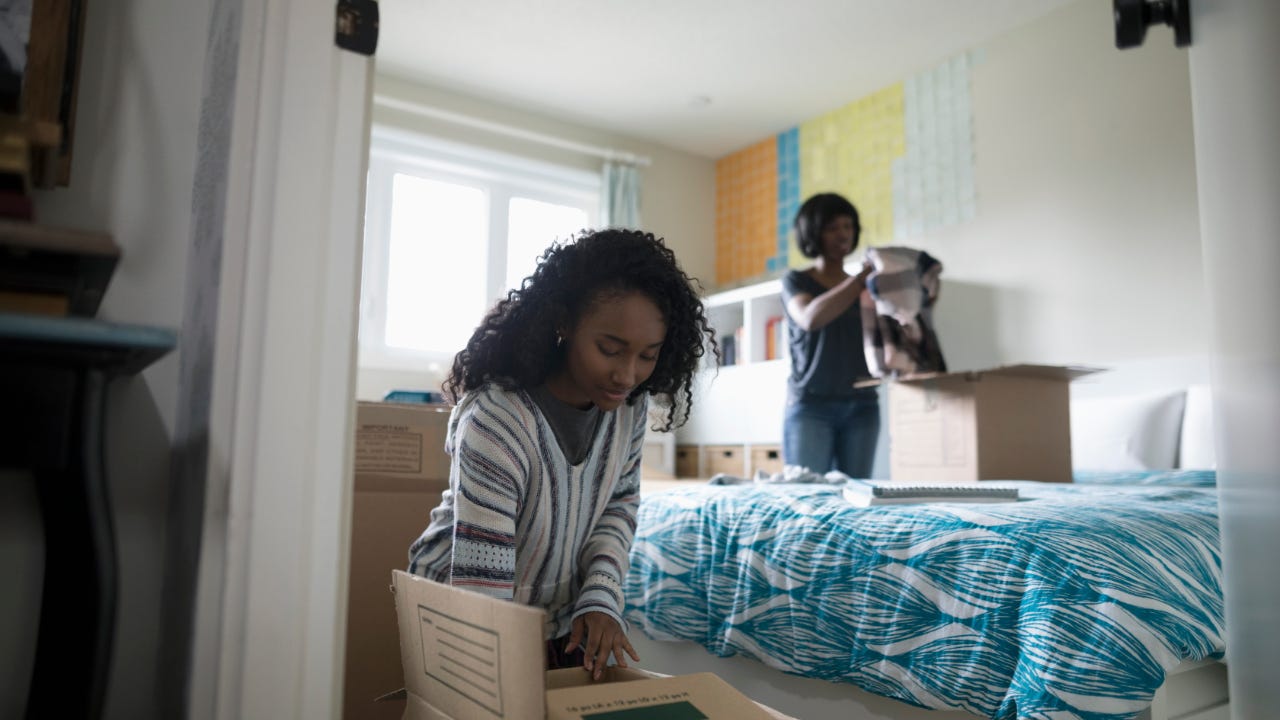8 things to do immediately after buying a house



If you’ve just bought a new home, congratulations — closing on a house in today’s challenging market is certainly something to be proud of. Now that you’ve made it through house hunting, making the offer, the mortgage process and the closing, you might think it’s time to kick back, relax and enjoy your new place.
Don’t get too complacent, though. Moving into a new home means you’ll need to take some action right away to make sure you’ll be a successful homeowner now and in the years to come. Here are some of the first things to do when buying a house — and immediately after.
What to do after buying a house
1. Connect the utilities
Before you even move in, be sure to connect all of your must-have utilities, like water, gas and electricity. This will help pave the way for a smooth move and ensure you have the essential necessities as you’re getting settled. No one wants to unpack boxes in the dark.
2. Secure your home
The first thing you should do when you’re getting ready to move in is change the locks, garage codes and access to any other entry points. Lior Rachmany, CEO of Dumbo Moving and Storage in Brooklyn, New York, recommends taking care of these security-related tasks before you move in: “You don’t want the previous homeowners to have the ability to enter your home,” he says.
The cost to change locks can vary based on the level of security, complexity of the lock and whether you choose to hire a professional locksmith or do it yourself. If your home comes with an alarm system, you’ll likely need to pay to reconnect service — or choose a new provider. Ask for the instruction manuals and codes for any electronic systems, like home alarms and garage openers, at the closing, and change the codes to new configurations that only you will know. If the manuals are not available, you might be able to find reprogramming instructions online.
3. Check smoke and carbon monoxide detectors
To help ensure you and your family are safe in your new home, make sure all smoke and carbon monoxide detectors are in good working condition. This may include installing fresh batteries or replacing entire units.
Most home safety experts recommend checking and changing the batteries in your detectors every six months. If you keep a family calendar, it’s easy to set a reminder. Check with your local fire department for help, too; some offer free inspections and testing if you call the non-emergency line to schedule an appointment.
4. Purchase or review your home warranty
Some homebuyers receive a home warranty purchased by the seller to cover the home’s major systems or appliances. (The last thing a new owner wants to deal with is a broken dishwasher or HVAC unit.) If you received a warranty, review the specifics so you know exactly what’s covered and how to file a claim.
If you don’t get a warranty, consider purchasing one. “There are many home warranty companies in the marketplace that cover a variety of items,” says Sergio Gonzalez, a Realtor with SG Associates in Westlake Village, California. Shop around for the best deal: “The price of these plans will vary based on the size of the home and the plan selected,” he says.
5. Find the circuit box, emergency shut-offs and appliance manuals
Even if your new home isn’t brand-new construction, it’s new to you! So it’s vital to understand how things work. Make sure you know where the emergency shut-off valves and circuit-breaker box are. If the box isn’t labeled, add labels to the individual circuits so you know which ones go to which room or appliance. And gather up all the appliance manuals for easy reference if needed.
6. Refresh the paint and flooring
One of the easiest and most cost-effective ways to make a house your home is to give the interior a fresh coat of paint. Unlike renters, as an owner you can dictate your color palette and timeline; it’s all on your terms. If you get the painting done (either DIY or with help from a professional) before moving your furniture in, you won’t have to move pieces around again and worry about drips or splatters.
Just like refreshing the walls with new paint, refreshing or refinishing floors is cheaper and easier to do when your home is still empty. Flooring can make a huge difference in a home’s appearance. If yours are in less-than-pristine condition, consider replacing old carpets or refinishing existing hardwoods before you move in. Even years-old tile can take on a brand-new appearance after a thorough professional cleaning.
7. Use your inspection report as a to-do list for upkeep
After buying a house, Gonzalez recommends reviewing any issues that were flagged on the home inspection report but are not yet fixed. Using the report as a guide, make a list of things to repair, update or maintain for the future, ranking them from most to least urgent. You’ll want to address items that can potentially cause problems later, such as dirty gutters, leaky pipes or doors and windows that need to be resealed.
8. Create a regular maintenance schedule
Think of maintaining your new home as a marathon rather than a sprint. Instead of trying to tackle all of the tasks immediately, be thoughtful about the things that need to be done over time. This may include replacing air filters, cleaning the gutters, pressure washing the exterior and more.
FAQs
-
Safety first: Secure your new home right away by changing the locks and reprogramming garage-door or alarm codes so that no one has access but you (and your family). It’s also a good idea to get your utilities connected before you move in, so that you have lights and running water right away, and make sure all smoke detectors are in good working order.
-
No one wants to be house-poor, so it’s important to make sure you have enough cash reserves to pay for regular maintenance and upkeep and the rest of your everyday expenditures, like food and transportation. This is why many experts recommend following the 28 percent rule when house-hunting: Spend no more than 28 percent of your monthly income on housing. You should also make sure to have an emergency fund, in case of unexpected surprises.
Why we ask for feedback Your feedback helps us improve our content and services. It takes less than a minute to complete.
Your responses are anonymous and will only be used for improving our website.
You may also like

What is the best time of year to sell a house?

Should you buy a house? 8 signs you’re ready

10 key questions to ask when buying a house

